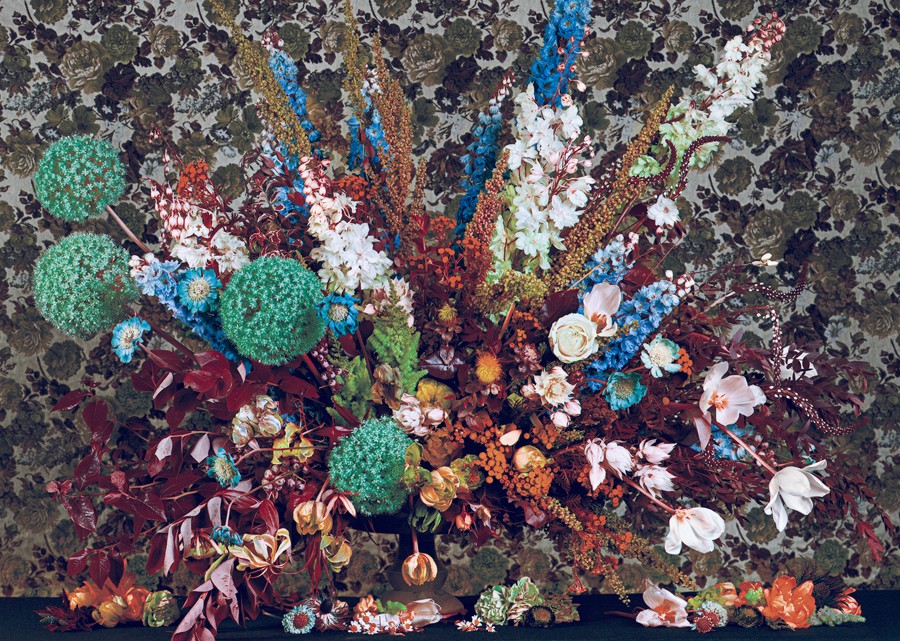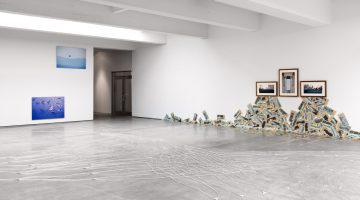Jessica Eaton’s Wild Permutations
MOCA Cleveland (and Transformer Station)
February 6 – May 24, 2015
11400 Euclid Avenue, Cleveland, OH 44106
This astute exhibition of Jessica Eaton’s speculative, intricate photography is both timely—capturing the artist at a key transition in her practice—and ambitious: MOCA Cleveland curator Rose Bouthillier worked with the private contemporary art center Transformer Station to present Eaton’s work at the two venues on opposite sides of Cleveland. But while the Transformer Station exhibition, which closed May 2nd, focused only on Eaton’s more established work—the cfaal cube series—MOCA’s show juxtaposes this work with the artist’s very recent turn to eerie, surreal color studies of elaborate floral arrangements. (The work in both institutions will travel together to Oakville Galleries in Ontario as an integrated show this coming fall.)
Eaton’s cfaal series, begun in 2010, stands for “Cubes for Albers and LeWitt.” Like Alber’s Homage to the Square series, Eaton uses myriad combinations of color and geometric shapes to experiment with the effects created by their interactions. And like LeWitt’s three-dimensional structures, Eaton chooses cubes as the subjects of her work for their unobtrusive simplicity. However, the underlying subject of this seemingly clinical approach is photography itself. The manifold nature of Eaton’s process creates complex, layered photographs that both complicate their own status as indexical representations and slow down the viewer’s process of reading the images, resulting in an experience of productive disorientation.
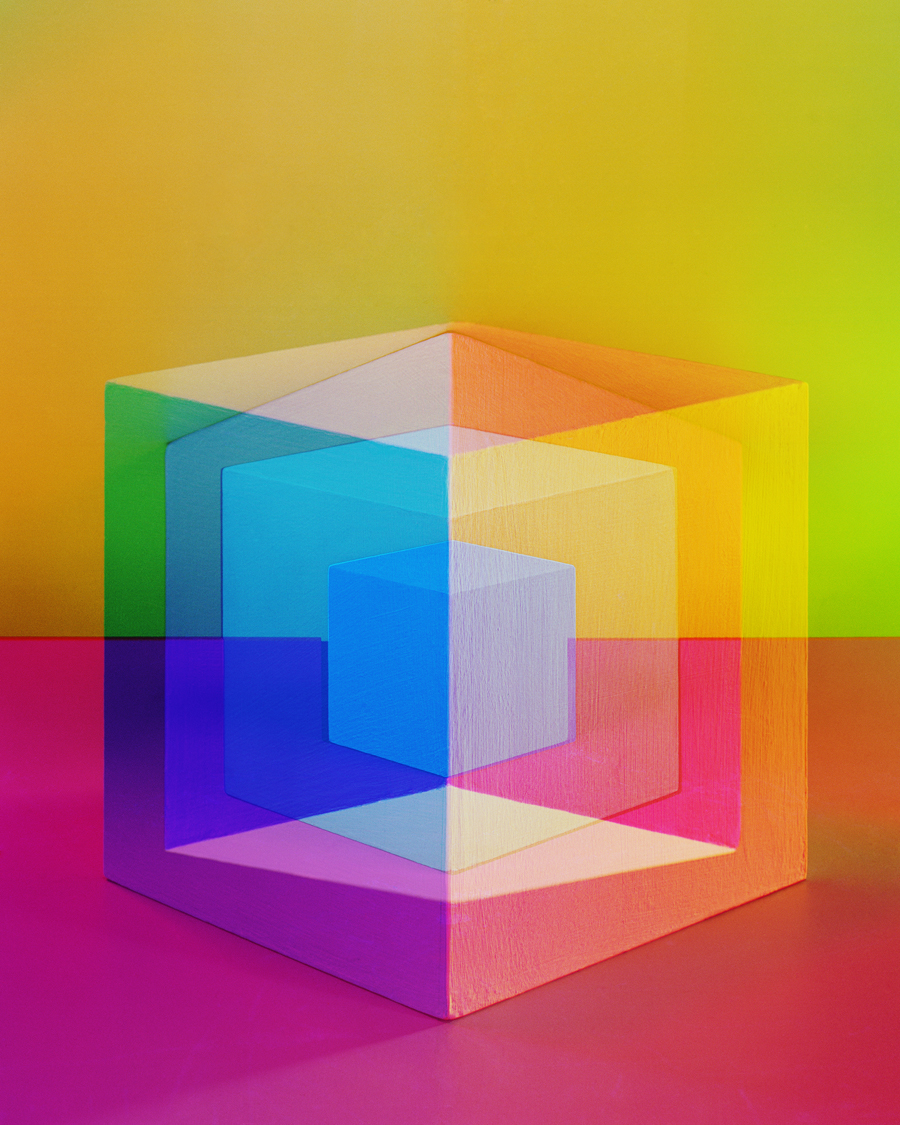
Jessica Eaton. “cfaal 346,” 2013. Archival pigment print. 50 x 40 inches. Courtesy of the artist and M+B Gallery, Los Angeles
A representative group from this series comprises the bulk of Wild Permutations at MOCA. Photographs of grayscale cubes and other geometric shapes are composed in large-format cameras. Images are layered by flipping negatives, and Eaton adds color separation filters to each of the multiple exposures to create additive color combinations (the more color filters used, the lighter the resulting image). The resulting photographs hover between abstract and realistic, with edges and textures that betray the physical presence of the shapes. Digital reproductions don’t do justice to the way that the cfaal photographs challenge perception itself, challenging the eye to make sense of depth while seeming to vibrate in a half-real space. At heart, though, there is a certain theoretical coldness to the images that makes them conceptually challenging but flat in emotional effect.
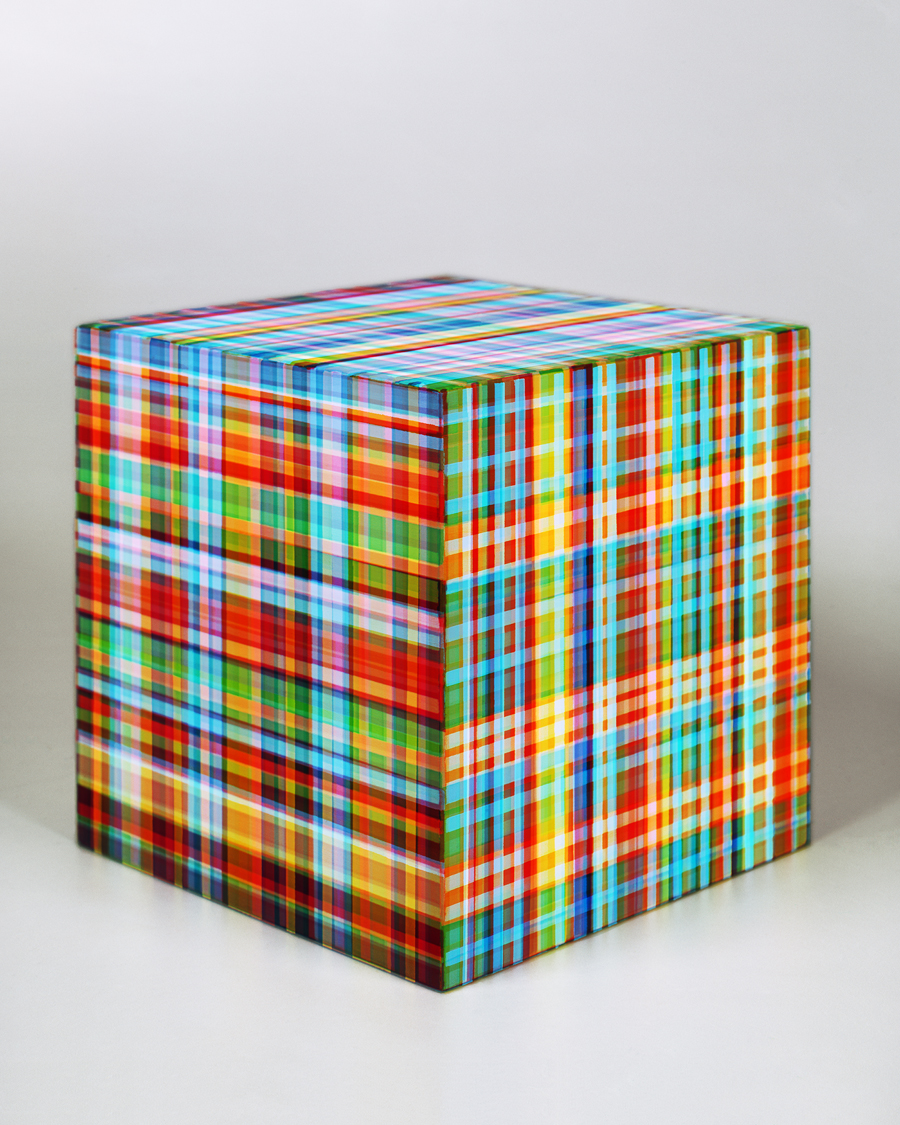
Jessica Eaton. “Homage to Tartan Ribbon,” 2014. Archival pigment print 50 x 40 inches. Courtesy of the artist and M+B Gallery, Los Angeles
In contrast, Eaton’s new series of floral subject matter, UVBGRIG (2014/2015), is close to home, more grounded in human subjectivity and art history. Each of the images in the series depicts the same subject: an ornate bouquet of flowers in front of floral wallpaper. Eaton’s approach to the new series is characteristically systematic. However, instead of using color filters on grayscale images, Eaton here separates out an incredibly noisy amount of color information, then adds multiple separations of top of one another. The results are not just strange but palpably impossible photographs that use the visual languages of both art historical still life painting and vernacular digital photography in the age of Instagram filters.
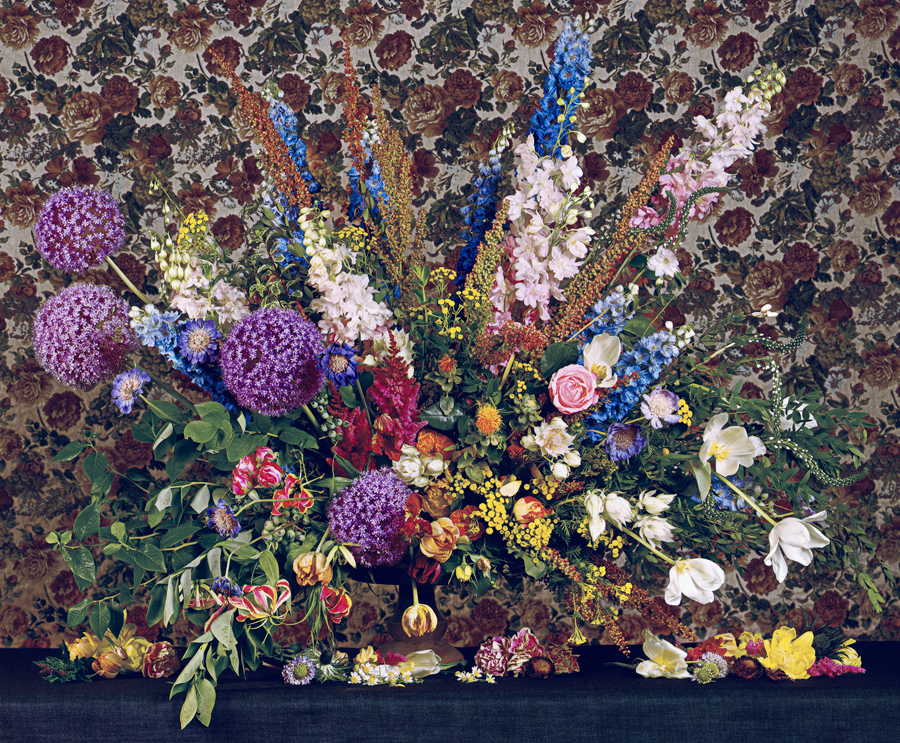
Jessica Eaton. “MF 05 / Tricolour V 02: (R > R, G > G, B > B) Registered,” 2014/2015. Color carbon print. 21 x 25 inches. Courtesy of the artist and M+B Gallery, Los Angeles
Their hyperreal brightness, reminiscent of early Technicolor, is the first and lasting impression of the botanical images. This effect is not just due to the contrast between garish colors and organic forms, but also to the rarely-used process of color carbon printing, which creates extremely bright tones in an unusually wide range. These silver gelatin prints are also free of grainy effects. In short, this series seems Photoshopped, filtered to the point of impossibility, although the techniques are purely analogue.
Unlike the cfaal cubes, the flowers never fully disappear into Eaton’s experiments but remain the problematic center. With this series, Eaton has grounded her own idiosyncratic act of opening the back of color photography’s machine into long traditions of art history, lending the new series heft and melancholy. In the smaller gallery space that holds the ten MF variations, the images all seem incomplete—even those that have more color than could exist in nature. Some are missing the shadows that allow individual flowers to be distinguished, and border on abstraction—almost expressionist. Others appear faded, their palates just unnatural enough to appear damaged, recalling vanitas painting. It’s not just the question of perception that Eaton is challenging here, but how a subject so iconic in art history as to be clichéd could be simply one more long, fascinating subject that photography can deconstruct and expose as fiction.
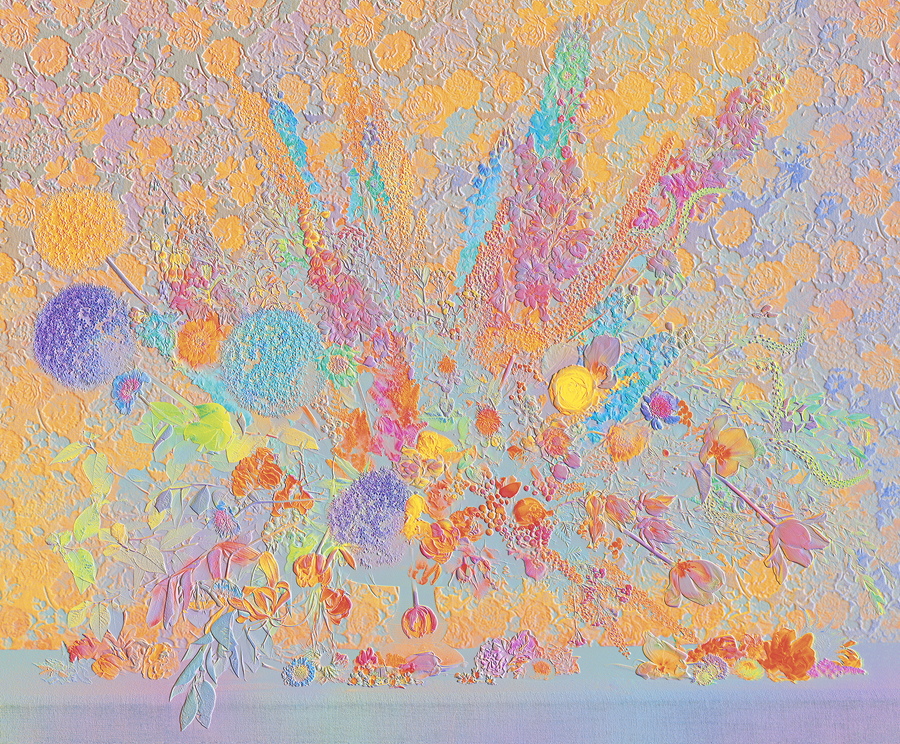
Jessica Eaton. “MF 05 / Tricolour V 08: (MF 04 (d/b) + MF 05 (d/b)) + ( – MF05 G03) Unregistered,” 2014/2015. Color carbon print. 21 x 25 inches. Courtesy of the artist and M+B Gallery, Los Angeles
